How to measure mechanics of single cells
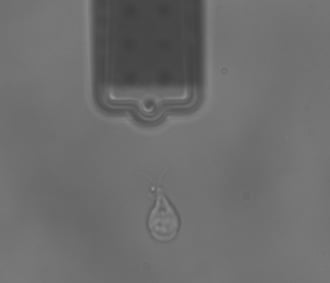
06.11.2024
The ultimate tool for nanoscale research from biological molecules to advanced new materials.
The versatile mid-range research AFM that grows with your demands in modes and accessories.
A compact affordable research AFM that is astoundingly easy to use, with more than 30 modes and options.
Fastest reliable sub-Angstrom surface roughness metrology.
Bringing the power of DriveAFM to a wafer metrology system purpose-built for the requirements of the semiconductor industry.
Measure roughness and other material properties of heavy and large samples up to 300 mm and 45 kg.
For unique requirements, we will design a bespoke AFM solution, leveraging our decades of engineering expertise.
Slide an AFM onto your upright optical microscope turret for a leap in resolution.
One of the smallest ever AFMs, created for integration into custom stages or existing setups.
A flexibly mountable research-grade scan head for integration into custom stages or existing set ups.
What is atomic force microscopy (AFM)? How does AFM work? What AFM modes do I really need? How do I get started with AFM?
Learn how AFM works with cantilever/tip assembly interacting with the sample. Explore CleanDrive technology, calibration methods, and feedback principles for precise nanoscale imaging.
An overview of common AFM modes. To learn about each mode in more detail and see application, view the full article.
We regularly publish detailed reviews providing practical guidance and theoretical background on various AFM applications.
Read detailed technical descriptions about selected AFM techniques and learn how to perform specific measurements on Nanosurf instruments.
A library of links to research papers in which Nanosurf instruments were used.
Learn AFM from our library of recorded webinars, covering different measurement techniques, modes, and areas of application.
Short video clips explaining how to perform different operations on Nanosurf instruments.
Watch a product demonstration to learn about the capabilities of our AFMs.
Short videos of our AFMs.
Browse news articles, press releases and a variety of other articles all around Nanosurf
Browse Héctor Corte-Léon's weekly experiments, for inspiration, entertainment, and to discover everyday applications of AFM.

Héctor here, your AFM expert at Nanosurf calling out for people to share their Friday afternoon experiments. Today I show you how I embed cells in a collagen matrix. This is a proof of concept for those interested in tissue engineering, to know how to obtain a test sample for their AFMs.
A few weeks ago, I posted the fridayAFM "Secrets of the egg shell" and showed how it is relatively easy to obtain a collagen matrix. I did it because egg shell membrane has become a hot topic for its potential applications in bioengineering (see Ref 1), and it felt like having a simple procedure to prepare the sample and perform AFM was something useful. Also, because I saw many SEM images, but few taken with an AFM, so I wanted to add some data to make other people's journey easier (speaking of which, have you checked the mouse tail collagen images in our image gallery?) .

At the time, I left it as an open challenge to try embedding things in that matrix, because one major line of research at the moment is to use egg shell membrane as scaffold for tissue engineering (see Ref 2 for instance on how to use eggshell membrane to repair skin). So, today I'll be showing exactly that, how to embed cells in the egg shell membrane, and I start by recreating the same result I got in the previous fridayAFM. I opened one egg (see image below), peeled the membrane, put it on top of a glass slide and let it dry for about one hour (slimy side down to help with the adhesion to the glass slide).
So far, the same result, nothing new here, but it is always good practice to double check procedures. In my life I spent many hours measuring things that were not there in the end, so trust me and don't skip steps, measure twice, cut once.
Before trying to embed cells, I decided to try something smaller, and in principle easier to prepare, in this way, I might be able to differentiate if the problem is the embedding or the cells. So, what I can use?
The answer was in a much older fridayAFM when I imaged marker ink on paper. It turns out that the ink was made of tiny beads in a suspension, and once the liquid dries out, the beads attach easily to the surface and are easy to identify (and to image).
The question is, if the marker is applied to the egg shell membrane, will the beads attach to the collagen fibers? Will the beads penetrate inside? I'm not sure if the liquid that carries the beads in suspension will wet the collagen or not, but if it does, maybe it passes through the membrane and washes away the beads. There are many possible scenarios. But if they stay within the membrane and I can image them, then it means the membrane can be used to trap things and they are stable enough for imaging. Not the same size and behaviour as cells, but close enough if it works, and it will be similar to functionalizing the egg shell membrane with nanoparticles, which is a very active area of research (see Refs 3 and 4).
So, I peeled a new membrane piece, mounted on the glass slide as before, painted it with the marker as if I using it to highlight text, and then let it dry for about one hour.
It worked nicely... once I used the same brand of marker as the one I used before with paper. I don't want to digress here, but maybe the marker I tried was "dry", or despite looking similar, the composition of the markers is very different, figuring out the reason will take a lot of time, so at the moment I stick to exactly the same recipe.
If you are working with nanoparticle functionalization, this could be a good test sample to see if you can attach nanoparticles or how they degrade, or if a particular treatment washes the particles away... the limit is your imagination. The important thing is that with this knowledge, we can go for the next challenge, something big.
Yeast is going to be the unicellular organism that will try to embed in the egg shell membrane. To do so I used the knowledge I gained with yet another fridayAFM, when I showed how to prepare a yeast sample to image in air.
I started by preparing the egg shell membrane on a glass slide. Then, after half an hour or so (while it was still visible wet), I prepared the yeast using water, sugar and instant yeast (as in the fridayAFM mentioned above). Then the extra step, I dipped the membrane on the yeast 3 times for a few seconds each time. I left it drying for an hour before imaging.
Did it work?
Judge fpr yourselves.
Surprisingly, despite no optimization, it did work. It is possible to see some yeast cells on top of the matrix, but also embedded within the matrix. Did I remove the nutrients too early? Probably some more time hydrated would have allowed the yeast inside of the matrix to grow and generate new cells filling all the available space. But for a Friday afternoon test this is all that I managed to do, and demonstrates that it works.
Now you know how to prepare test samples with small and large objects using a collagen matrix as scaffolding. I hope you find it useful, and if you use it in your daily routine in the lab, please let me know, and as usual, if you have suggestions or requests, don't hesitate to contact me.
Further reading: check out our app note on live cell AFM imaging or the bio sciences section of both our Drive and Flex systems (both have cool images, I promise).
References:
1 Rosemond A Mensah et al The chicken eggshell membrane: a versatile, sustainable, biological material for translational biomedical applications. (2023) Biomed. Mater. 18 042001. https://doi.org/10.1088/1748-605X/acd316
2 Hee Jung Choi, Young Min Kim, Jeong-Yong Suh, Jae Yong Han, Beneficial effect on rapid skin wound healing through carboxylic acid-treated chicken eggshell membrane. (2021) Materials Science and Engineering: C, 128, 112350. https://doi.org/10.1016/j.msec.2021.112350
3 Ding, Q., Kang, Z., He, X. et al. Eggshell membrane-templated gold nanoparticles as a flexible SERS substrate for detection of thiabendazole. Microchim Acta 186, 453 (2019). https://doi.org/10.1007/s00604-019-3543-1
4 Preetam Guha Ray, Shreya Biswas, Trina Roy, Saptarshi Ghosh, Deblina Majumder, Piyali Basak, Somenath Roy, and Santanu Dhara. Sonication Assisted Hierarchical Decoration of Ag-NP on Zinc Oxide Nanoflower Impregnated Eggshell Membrane: Evaluation of Antibacterial Activity and in Vitro Cytocompatibility ACS Sustainable Chemistry & Engineering (2019) 7 (16), 13717-13733. https://doi.org/10.1021/acssuschemeng.9b01185

06.11.2024
How to measure mechanics of single cells
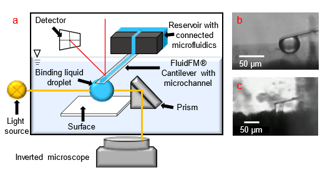
14.05.2024
How to measure forces between droplets
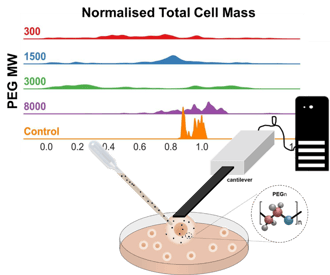
11.03.2024
How to perform mass measurements in cell exposed to different environments.

08.12.2024
Learn how to make a Python code to interface your AFM with a gamepad.
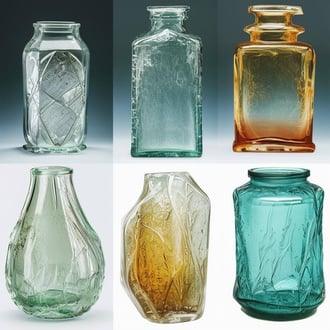
01.10.2024
FridayAFM: learn how the extreme sensitivity of AFM can reveal the glass ageing process.
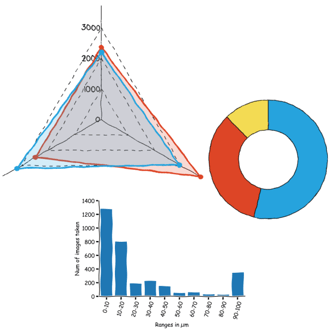
11.07.2024
FridayAFM: learn how to perform datamining on large sets of AFM data.
Interested in learning more? If you have any questions, please reach out to us, and speak to an AFM expert.
